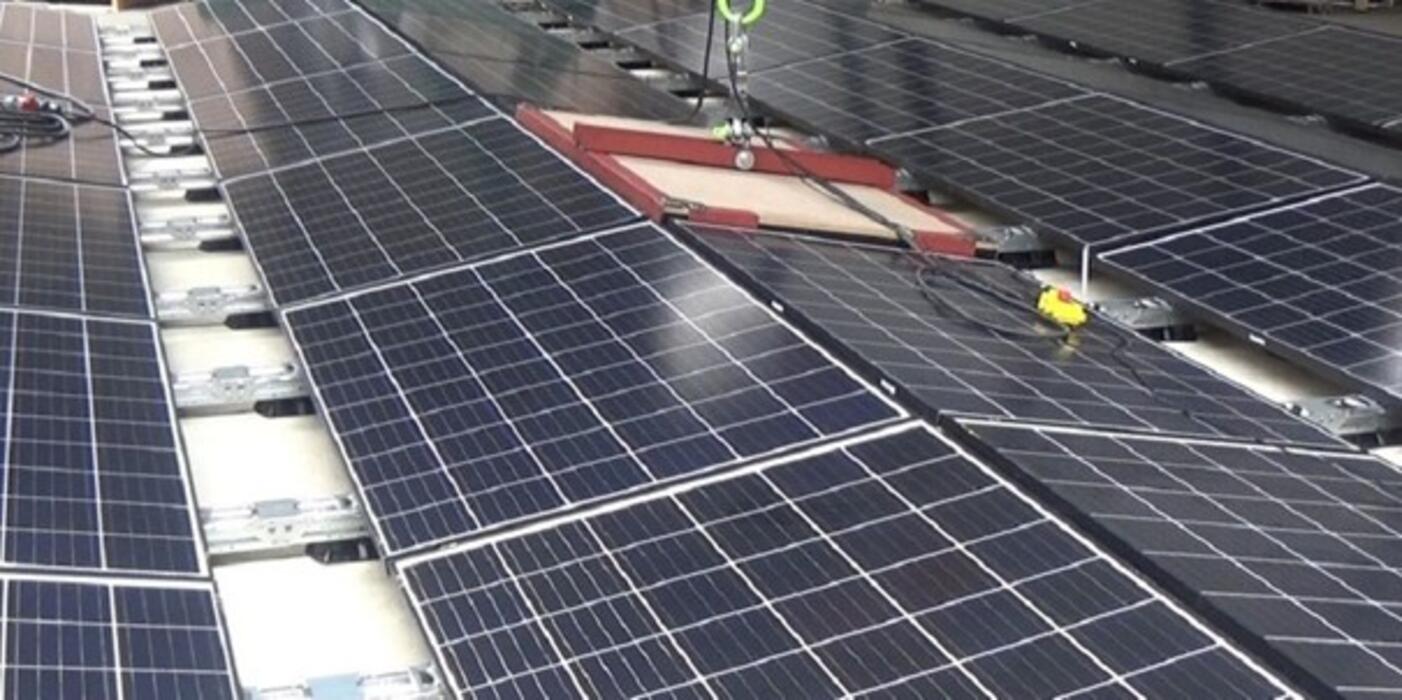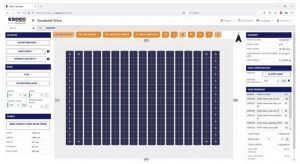
This article, is a translation of a Dutch version, written by Joyce Beuken, published on 15 June 2021 on www.solar365.nl.
A lot of time and energy is invested in wind tunnel testing. But how do you find out if your calculations actually create a secure situation in practice? In the last of this three-part series about wind tunnel tests, Jeroen Weller explains how the results from the wind tunnel research are supplemented with mechanical tests.
In the first part, you can read more about the development of FlatFix Wave Plus, the latest mounting system from Esdec.
In the second part, you can read how Esdec conducts wind tunnel tests.
To find out what effect the coupling between different panels has on wind load distribution, Esdec carries out mechanical lift tests. “Esdec uses these tests to see what surrounding panels do when a specific panel is subjected to lifting forces,” says Weller.
He explains that a gust of wind never hits the whole field with equal force at the same time. “The gust of wind usually impacts a corner or side first, before it reaches the rest of the field, so you need to know how well each panel is supported in its position by the surrounding panels. Every edge or corner is different, and some are weaker than others.”
Coupling
Weller emphasises that there’s big difference between how corner panels in a field are coupled, for example, compared with panels in the middle. “A corner panel is coupled on two sides, whereas a panel at the edge of a field is directly coupled on three sides. In the middle of a field, panels are coupled to each other on all sides, and therefore best able to transmit the incident forces.”
Weller explains that if a panel is surrounded by other panels, it is better protected from the wind. “Therefore, always more ballast needs to be placed in the corners and at the edge than in the middle of a field.” With the FlatFix Wave Plus system, the ballast can be added in two different ways. Bricks can be placed in the rail without needing to add components. And if even more ballast is needed, an extra ballast rack can be installed so that more bricks can be added.
But how does the installer know what weights need to be placed under which panel? “We have an online calculator tool that anyone can use,” explains Weller. “The tool is accessible for everyone. You just need to create an account.”
You can use the tool to easily simulate the situation on the roof by simply drawing how you want to arrange the panels. The tool automatically calculates how much ballast needs to be added for which panels.”

Esdec’s calculator tool
The so-called ballast plan is partly determined by the height of the building and the type of panel, but the terrain category and wind zone also play a role. It may be the case that it is necessary to leave out a panel in the middle of the field, perhaps because there is a chimney there or if space is needed for a heat pump. “It’s important that any panels which are left out of a field are also entered in the calculator, because this has important consequences for the coupling factor and the amount of ballast required.”
Both the wind tunnel tests and the mechanical lift tests are very important in achieving a correct end result. “The wind tunnel tests provide insights into the forces that act on your panels, and the lift tests determine how well panels support each other under the influence of these forces.”
“It’s not a cheap analysis. The research can easily cost tens of thousands of euros because the panels break during the mechanical tests.” The corners catch the most wind and are the least well coupled, which by definition means that they need the most ballast. It is therefore extremely important to use the amount of ballast indicated by the calculator.
Esdec invests a lot of time and energy in informing installers, and this is reflected in the installation tool. “It is of course bad news if one of our systems is damaged, even if it turns out it wasn’t our fault. It’s still has a negative effect on our image.” Esdec has developed a checklist for delivering and servicing installations, and Weller says that the ballast plan generated by the calculator must also be very closely observed. “Our customers will get the quality they expect when they use the checklist and the plan.”
Esdec also promotes knowledge sharing in other ways. For example, in recent months the supplier has organised webinars on national recognition schemes and quality norms. “These are subjects that aren’t directly related to our product,” says Weller, “but we nonetheless think it’s important our installers know about them.”
The calculator tool can be used by anyone, and Weller concludes: “Our aim is to share our knowledge to generally raise the quality standards in the sector.”